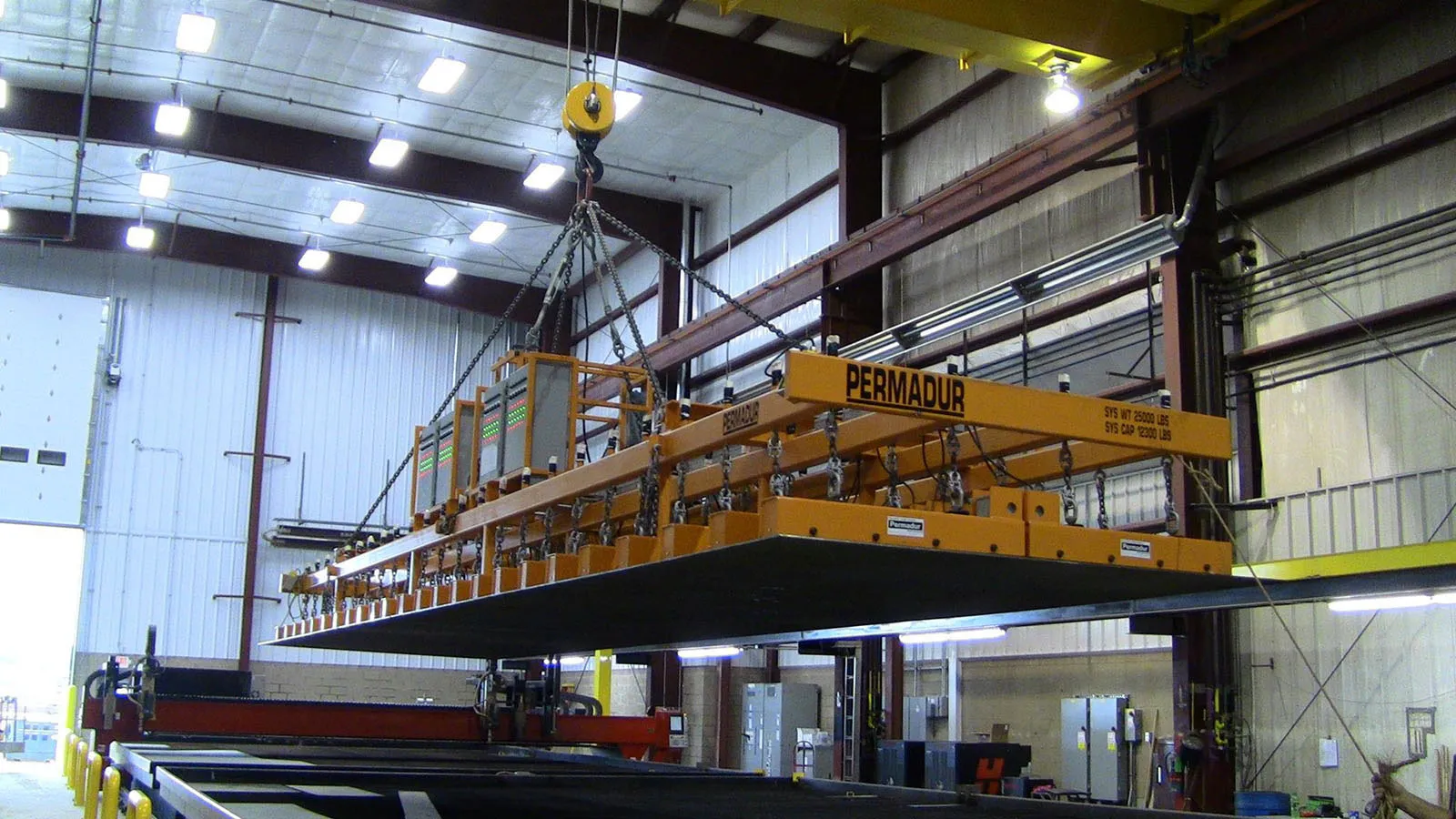When your daily operations involve handling steel plates, there's no room for guesswork. Whether your team is working with massive sheets measuring up to 50 feet long or smaller precision-cut plates, selecting the appropriate plate handling system directly impacts productivity, safety, and workflow efficiency. Choosing the wrong system doesn't just slow production—it introduces unnecessary risk and frustration into your process.
This decision isn't about which system works; it's about precisely matching the equipment to your needs. By understanding exactly when and why to select Heavy Plate Handling, Large Plate Handling, or Small Plate Handling solutions, you can eliminate uncertainties, ensure safety compliance, and significantly improve throughput.
When Do Heavy Plate Lifting Magnets Become Essential?
If you're regularly managing heavy-duty plates—particularly those that demand extra lifting capacity—standard magnet systems often fall short. Dealing with thicker plates or high-volume lifts isn't just a logistical challenge; it directly affects safety and productivity. Heavy Plate Handling Systems tackle these specialized demands by using fewer, more powerful magnets explicitly designed for substantial weights and sizes.
Consider adopting a Heavy Plate Handling System if:
- Your plates are consistently large and thick (typically 8' x 20'–50', thickness above 1 inch), requiring specialized FP-4000 magnets engineered for extreme holding capacity.
- You require frequent repositioning of magnets to handle various load distributions, as these systems offer adjustable magnet rows along the load beam via cam followers, enabling customized configurations.
- Your operations require confirmed safety measures, such as Permadur's exclusive Safety Indicator Lighting System, which verifies that the magnets are securely attached to each plate before lifting—essential for handling heavy loads.
Key advantages you gain with Heavy Plate Handling:
- Higher capacity per magnet: Ideal for thick and heavy steel sheets.
- Adjustability of magnets: Flexibility to accommodate differing plate dimensions and ensure safe, balanced lifting.
- Electrical safety and reliability: Electrically controlled permanent magnets won't drop loads, even in a power failure, removing worries of costly downtime or hazards.
Large Plate Handling: Precision Control for Sizeable but Thinner Plates?
You may find yourself working with large steel plates that aren't necessarily thick, yet their substantial dimensions still present significant handling challenges. Standard magnet solutions can easily warp or mishandle these thinner, oversized sheets. Large Plate Handling Systems bridge this critical gap, offering specially designed magnet arrays with precise control tailored explicitly for larger yet relatively thin plates (3/16" to 1").
Opt for a Large Plate Handling System if:
- You frequently handle large surface-area plates (8' x 20'–50') but with thinner profiles, where uniform weight distribution is crucial to preventing warping or deformation.
- You need consistent selectivity with row-specific control, allowing your operators exact control over individual plates in stacks.
- On-board power systems are desirable, such as self-contained rechargeable batteries, which provide hundreds of lifts without requiring external power connections—ideal for areas with limited access to AC power.
Benefits unique to Large Plate Handling Systems include:
- Spring suspension assemblies: Critical for even load-sharing across plates, minimizing bending or warping risks.
- Flexible magnet configurations: Magnets can be repositioned on crossarms and load beams, adapting quickly to varied plate sizes.
- Mobility and versatility: Systems often feature onboard batteries and radio controls, granting crane or forklift operators freedom and adaptability on busy shop floors.
Is Small Plate Handling Right for Your Precision Operations?
If you're tasked with precise lifts of smaller steel plates (commonly 4' x 8', 5' x 10', or 6' x 12'), the challenges you face differ greatly from handling large or heavy plates. Small plates require quick and accurate placement, often involving rapid production cycles or tight operational areas. Standard plate magnets might introduce unnecessary bulk, limiting mobility or precision. Small Plate Handling Systems specifically address these specialized demands.
Choose a Small Plate Handling System if:
- You regularly lift smaller-sized plates, requiring quick maneuvering and exact positioning within tight production cells.
- You value multi-use flexibility, as systems like Permadur's Series 102 provide master/slave configurations that allow individual magnets to detach for smaller, independent lifts.
- Your operators require easy repositioning capabilities, such as cam follower tracks or manual bolt adjustments, which are essential for rapidly changing part dimensions or customized work environments.
Critical advantages of Small Plate Handling include:
- Compact system footprint: Perfectly suited for facilities where operational space is limited.
- Integrated power and controls: Lightweight, battery-powered options eliminate dependence on AC power and offer handheld radio controls for operator ease.
- Rapid adaptability: The simple repositioning of magnets enables quick adjustments to evolving job requirements, optimizing uptime and flexibility.
How to Choose Your Plate Handling Solution?
Use this quick reference to confirm which plate handling option best fits your needs.
Heavy Plate Handling is your solution if:
- Plates exceed 1 inch in thickness and are very heavy.
- Safety and high lifting capacity per magnet are critical.
- Frequent magnet position adjustments are required for varying load distributions.
Large Plate Handling best suits your scenario if:
- Plates are large but relatively thin (3/16" to 1"), and careful handling is essential to avoid warping.
- Onboard battery power and radio control versatility are important for dynamic operational environments.
- You handle large plates that require precise, selective control from stacks.
Small Plate Handling should be selected if:
- Plates are smaller in size and require fast, precise handling in tight operational spaces.
- Flexibility and rapid repositioning are vital for quick job changes.
- You benefit from detachable magnets for individual small-part lifts.
Make Your Plate Handling Decisions with Clarity and Confidence
Matching your exact plate handling scenario to the right system eliminates costly guesswork, keeps your team safe, and maximizes your productivity. Carefully evaluating your daily operational demands—plate size, thickness, weight, and lifting frequency—ensures the plate handling solution you select provides ongoing reliability and safety compliance. To further discuss and confirm your choice, Permadur's experienced team stands ready to guide you—ensuring your lifting solutions always match your precise operational needs today and in the future.


